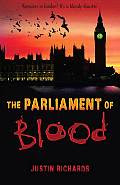By
Stuart Sharp
This article goes out with thanks to five members of the University of Hull fencing club, who agreed to assist me with a quick survey the other night. Or at least, they didn’t run away quite fast enough. Being reasonably used to me doing odd things, they were even quite helpful. The question was a simple one: “What was the last classic novel you read?”
At least, I thought it was simple at the time. After all, I wasn’t asking them for the classic novel they’d read ten books ago, or for a complete list of all the major characters in alphabetical order. Closer examination, however, revealed that it wasn’t that straightforward at all.
What constitutes a classic novel, for a start? One friend asked if the works of Arthur Conan-Doyle would count as classics, while another (probably not entirely seriously) mentioned Stephen King. Between us, we said no to the latter, largely on the grounds of age. We also said no to my other friend’s choice, on the basis that he was thinking of the Sherlock Holmes short stories, and I’d asked about novels. Personally, I might have allowed them, but I seem to have been outvoted. Given that it was my question, I’m still wondering how that happened.
We had two criteria then, for a classic novel. It had to be “old”, however you’re inclined to define that, and it had to be a novel. Thus armed with a vague definition, I expected a torrent of answers. Or possibly a dribble. There were only five of them, after all.
Apparently though, I still needed to make an important distinction. Did I mean the last classic novel that they had read some of, or the last classic novel that they had finished? I meant the last one that they’d finished, as it happened, and frankly I was starting to wish that I hadn’t asked, but they had raised a good point. If you ask anyone for the last novel they started but couldn’t finish, there’s a pretty good chance it will be a classic one. I’d actually go further, and lay decent odds that it’s going to be Moby Dick, Ulysses, or the Farie Queen. It so often seems to be. Usually, the reasons given are that the classic novel in question was boring, odd, or completely lacking in any intelligible plot.
In my case, I will occasionally add “it was due back to the library” and “I do have to do some work occasionally, you know” to that collection, but the basic list is the same. It has accounted for me having to break of part way through Beau Geste and The Catcher in the Rye so far this year, and looks set to put of my re-read of Paradise Lost on hold for a while yet.
To return to my random questioning of my friends, we did eventually get past all the ones we haven’t finished to return to the original question. The answers included Tess of the d’Urbervilles, The Lord of the Rings, a collection of short stories (apparently the rule about novels only applied to some of us), Robinson Crusoe and “I don’t know then… none?”
The answers were about what I expected, and tell us a couple of things about both classic literature and the people inclined to read it. The one woman in the group went for what we might be incredibly snobbish about for a moment and refer to as “proper” classic literature. It was literary by design, and hasn’t just acquired the tag with age. She was also the one member of the group who didn’t have to wrack their brains to think of something. It appears, once again, that women generally read more than men, and are inclined to read a more “literary” type of book more often.
That the others went for what we could term “classic fantasy” and “classic adventure” is also fairly predictable. Just as with the novels published today, there are deep genre and style divisions among older works. In much the same way that it is fairly obvious that a bunch of 19-21 year old male students is more likely to be interested in thrillers than in chick-lit, romance or family drama, so too they are more interested in Middle Earth than in, for example, the complete works of Jane Austen.
The two who couldn’t think of anything are perhaps more intriguing. I say two, because the one who went for the short stories did so having been unable to think of anything else. They are both intelligent people. One of them is an astrophysicist, and really quite clever indeed. I also happen to know that they are readers. The extended discussion on minor details of Terry Pratchett’s works that preceded my questioning was a clue.
So this isn’t just the occasional, and more usually male, antipathy to books in general. One of the two owns most of Bernard Cornwell’s works, so it isn’t even an aversion to longish books set hundreds of years ago. Instead, I can only assume that there is something about the very idea of classic literature that puts them off.
Perhaps it is because some pieces of classic literature are quite boring, strange, convoluted, and inclined to use the sort of devices that no modern author would be able to get away with. Perhaps, though I hope not, it is some odd belief in the idea of progress; that the books of today must somehow automatically be superior to those of the past.
More probably, it has something to do with the way such literature is often taught in schools. My own aversion to classic literature lasted several years into university, simply because I saw it as something very dry that you picked apart for meaning and discussion points rather than simply enjoying it.
The point, I suspect, is that classic novels, like any novels, are there to be enjoyed. They aren’t there so you can boast about which ones you’ve finished, or a chore that you have to perform if you wish to be taken seriously as a reader. Like any writing, there will be examples you like and examples that you just can’t get along with. It’s really only when we recognise this, and when we start to go along with our sense of what we really want to read, that the world of classic literature starts to open up a little.
That enjoyment factor is, incidentally, why I won’t be making huge efforts to correct this odd imbalance among my friends. Attempting to push volumes of the classics on them simply wouldn’t work, because again, it would be linking classic novels to the idea of being something you “have” to read. Until someone makes the connection between some classic literature and truly enjoyable reading, there is little chance that attempts to get them to read it will work.
Besides, it’s never struck me as particularly sensible to start pestering people who have ready access to swords.

















